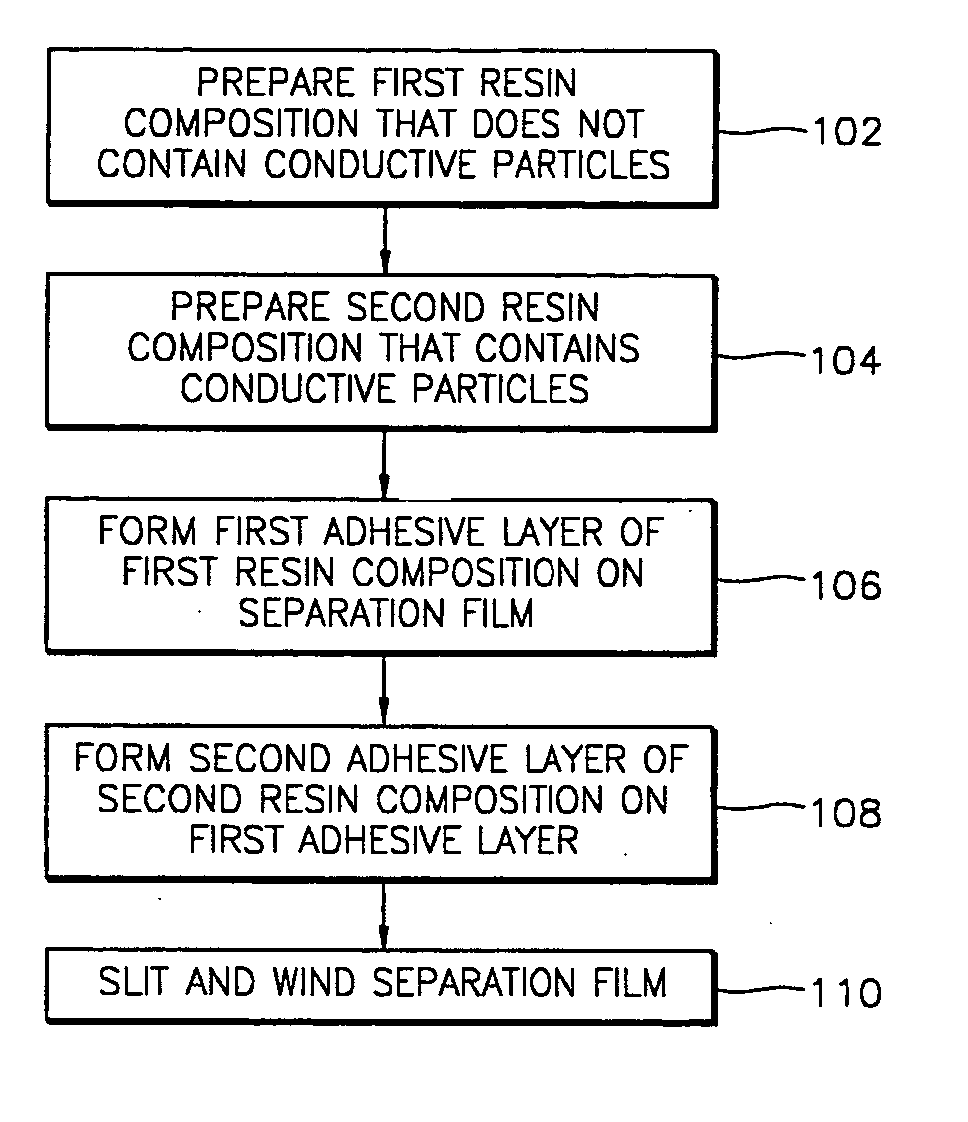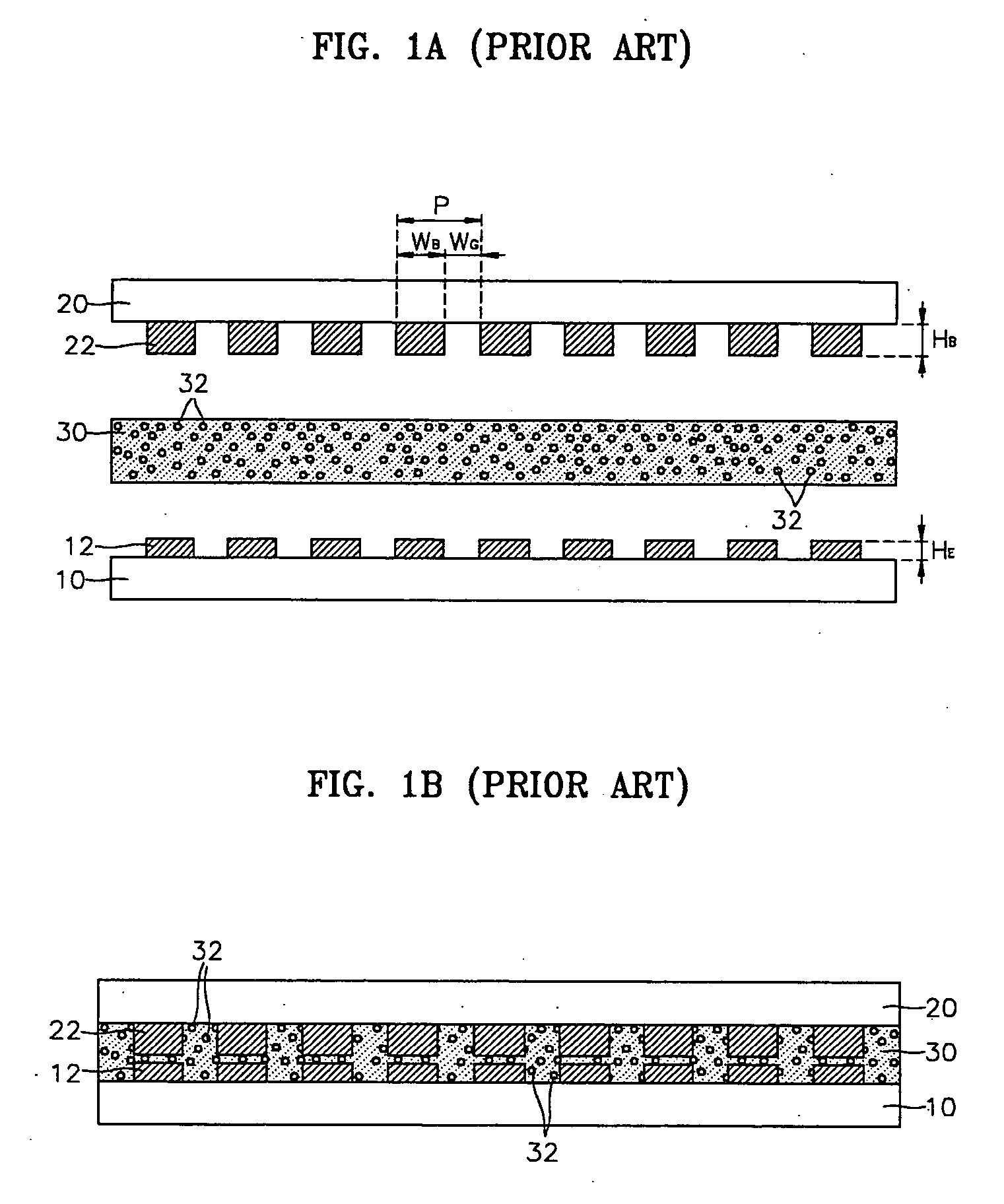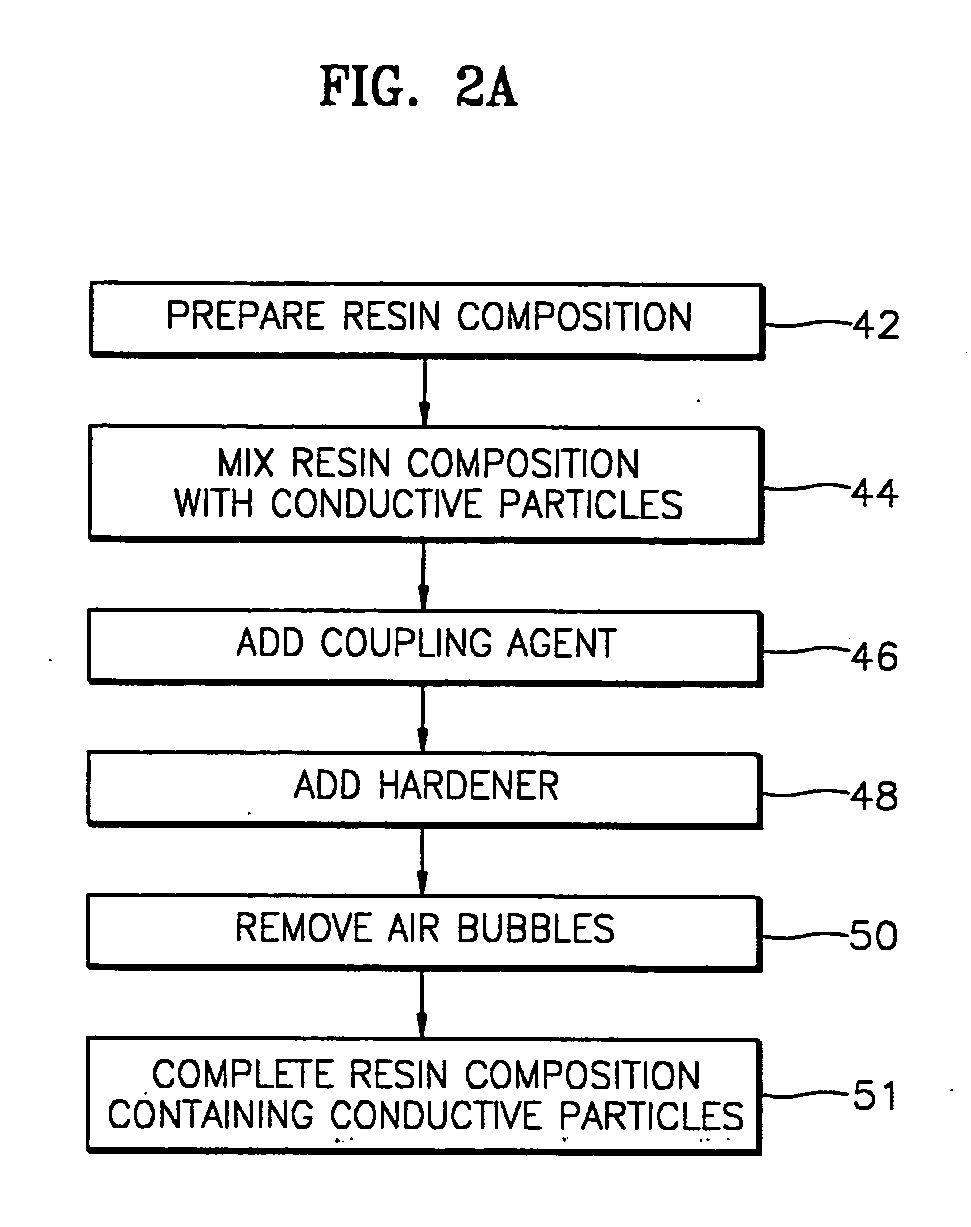Multilayered anisotropic conductive adhesive for fine pitch
a technology fine pitch, which is applied in the field of anisotropic conductive adhesive, can solve the problems of reducing electrical resistance, reducing electrical conductivity, and limited anisotropic conductive adhesives, and achieves the effects of reducing the cost of completing anisotropic conductive adhesives, increasing the adhesive strength between the substrate and the ic, and stable electrical conductivity
- Summary
- Abstract
- Description
- Claims
- Application Information
AI Technical Summary
Benefits of technology
Problems solved by technology
Method used
Image
Examples
first embodiment
[0049]FIGS. 3A and 3B are a flowchart and a cross-sectional view explaining a method of manufacturing an anisotropic conductive adhesive 140 according to the present invention. In FIGS. 3A and 3B, a method of manufacturing the anisotropic conductive adhesive 140 which can be used to connect an IC 130, on which a plurality of bumps 132 are formed, to a glass substrate 120, on which a plurality of ITO electrodes 122 are formed to a fine pitch, by a COG method will be described. In general, the ITO electrodes 122 on the glass substrate 120 each have a height of about 2 μm, which is less than the average particle diameter (in general about 3-5 μm) of conductive particles 143. Thus, in this embodiment, a method of manufacturing the anisotropic conductive adhesive 140 of a two-layered structure, which has one surface facing the IC 130 on which a nonconductive adhesive layer is formed and the other surface facing the glass substrate 120 on which a nonconductive adhesive layer is not formed...
second embodiment
[0057]FIGS. 4A and 4B are respectively a flowchart and a cross-sectional view explaining a method of manufacturing an anisotropic conductive adhesive 240 according to the present invention. In FIGS. 4A and 4B, a method of manufacturing the anisotropic conductive adhesive 240 which can be used to connect an IC 230, on which bumps 232 are formed, to a substrate 220, which is made of a flexible film, e.g., a polyimide film, and on which a plurality of metal electrodes 222 made of Cu or Al are formed to a fine pitch, by a COF method will be described. In general, the metal electrodes 222 on the substrate 220 made of the flexible film each have a height HE2 of no greater than about 15 μm more than the height of the ITO electrodes formed on a glass substrate. Thus, in this embodiment, there will be described a method of manufacturing the anisotropic conductive adhesive 240 of a triple-layered structure which has one surface facing the IC 230 on which a nonconductive adhesive layer is form...
fourth embodiment
[0072]FIGS. 6A through 6C are a flowchart and cross-sectional views explaining a method of manufacturing an anisotropic conductive adhesive 440 according to the present invention. In this embodiment, a method of manufacturing the anisotropic conductive adhesive 440 which can be used to connect an IC 430, on which bumps 432 are formed, to a substrate 420, which is made of a flexible film, e.g., a polyimide film, and on which a plurality of metal electrodes 422 made of Cu or Al are formed to a fine pitch, by the COF method will be described. In this embodiment, described will be a method of manufacturing the anisotropic conductive adhesive 440 of a triple-layered structure which has one surface facing the IC 430 on which a nonconductive adhesive layer is formed and the other surface facing the substrate 420 made of the flexible film on which a nonconductive adhesive layer is formed.
[0073] Referring to FIGS. 6A through 6C, in steps 402 and 404, a nonconductive first resin composition t...
PUM
 Login to View More
Login to View More Abstract
Description
Claims
Application Information
 Login to View More
Login to View More - R&D
- Intellectual Property
- Life Sciences
- Materials
- Tech Scout
- Unparalleled Data Quality
- Higher Quality Content
- 60% Fewer Hallucinations
Browse by: Latest US Patents, China's latest patents, Technical Efficacy Thesaurus, Application Domain, Technology Topic, Popular Technical Reports.
© 2025 PatSnap. All rights reserved.Legal|Privacy policy|Modern Slavery Act Transparency Statement|Sitemap|About US| Contact US: help@patsnap.com



